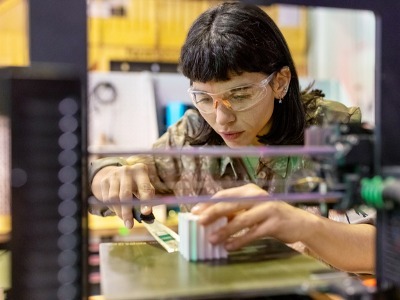
Student Budgets Supported by Little to No Cost Class Materials
Higher education should be affordable in every aspect, including course materials required for learning; no steep accessory expenses should outweigh the substance of your chosen field. Enter the No Cost/Low-Cost catalog, a worthwhile solution simplifying your budget for priority responsibilities such as rent, groceries, car payments, and mortgages. At TMCC, these are likely expenditures students worry about, and there’s relief in knowing economic lifelines are in place when times get tough.
Open educational resources (OERs) have dynamically altered the academic landscape, proving that a desire to enroll and complimentary intellectual features are a winning combination. Stop paying outrageous prices for gargantuan textbooks to purchase or lease or calculators with a nexus of computations that, while impressive, you’ll hardly use. These sections are ideal, with less than $40 for several being the maximum you’d have to shell out.
Dr. Jeffrey Alexander, Vice President of Academic Affairs, discussed the outstanding savings this has led to after implementing OERs to significantly improve graduation rates and relieve monetary burdens from those who rely on their full or part-time jobs in an increasingly inflated market, instructors taking the pledge to support our students and streamline their curriculum.
“Over 80 faculty members have participated in our OER development program since 2022, and they have done terrific work to find or produce them for their courses. During Spring and Fall 2023, their work has enabled us to schedule over 300 sections that feature no-cost materials, which saved students an estimated $940,000 last year,” Alexander said.
“Next year, TMCC hopes to integrate this data into our registration platform, MyTMCC, so that students can search for classes with no or low-cost materials as they build their schedules. We are committed to helping them persist, retain, and complete their programs, and our work to lower costs continues,” finished Alexander.
Take advantage of this phenomenal service for the coming semester! Not only will you be doing yourself a favor, but you’re cultivating sustainable behaviors for our world, reducing the need to cut down trees, print books, and ship them to the College. Discover the extensive library of subjects that fit your calendar and give your funds a breather. It’s another extraordinary way our community keeps our goals aligned, working towards a future where every undergraduate can confidently picture themselves on the commencement stage.
New 3D Printers Strengthen Students’ Creativity and Understanding
TMCC incorporates revolutionary technologies to enlighten and engage students with interactive workshops and exciting original projects. The newest 3D printers on the Dandini Campus serve this purpose, and inventive ideas can be brought to physical form in classrooms through a process known as additive manufacturing, in which a digital file generates a three-dimensional solid object.
It can build a hydroponic watering system for the plants inside or outside your home, clothing items, and even a musical instrument. All can exist with ingenuity and a precise blueprint. Your imagination is endless, but learning more practical and educational applications is the focus for those in the Engineering Program. Not that our professors don’t encourage cunning in an extracurricular sense.

Engineering student uses a 3D printer to cut a prototype.
Daniel Loranz, Physical Sciences Professor, shared how this tool’s usefulness will expand training exercises to include interacting with and studying the internal properties of 3D printers and then joining materials to forge components singular in scope and purpose.
“3D printing allows for the fabrication of unique parts that would otherwise be very difficult or impossible to create using standard practices. With the acquisition of two new 3D printers, students in ENGR 100 now have opportunities for gaining hands-on experience using this state-of-the-art manufacturing technique,” Loranz said.
In modern manufacturing enterprises, designers using 3D printers can turn concepts into more complex models or prototypes faster than traditional methods. Indelibly inexpensive, this system miraculously finishes tasks in hours, not days. Print-on-demand saves space in a virtual vault, so the need to stock tangible inventory is minimal. These are only a handful of its merits. Students will still get to experiment and test its capabilities while they learn. It’s thrilling to think of the possibilities their inspiration will bring into existence. Enjoying your academic work is a gift, and TMCC has shown its willingness to establish a culture where everyone thrives in gratifying, fresh, and purposeful instruction.
For more information, please visit the No Cost/Low-Cost and Engineering websites.






